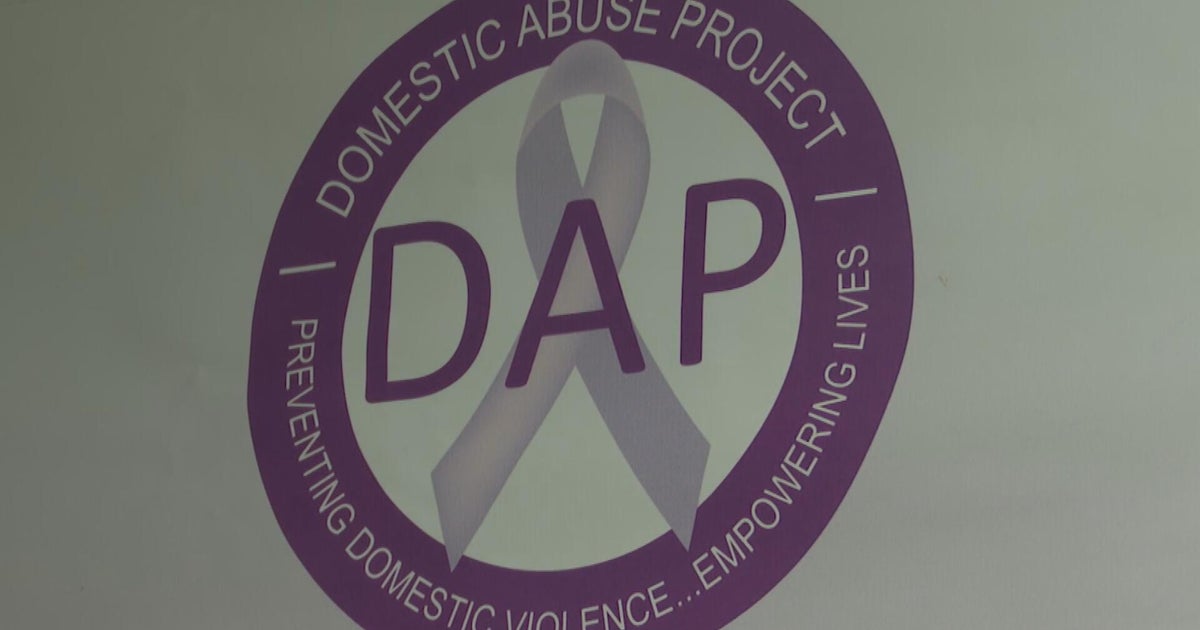Report on Digital Abuse as a Barrier to Sustainable Development Goals
Introduction: The Evolving Landscape of Gender-Based Violence
The proliferation of digital technology has introduced a new and insidious vector for gender-based violence, posing a significant threat to the achievement of several Sustainable Development Goals (SDGs). This report analyzes the phenomenon of digital abuse and harassment, framing it as a critical issue that directly undermines SDG 5 (Gender Equality), SDG 3 (Good Health and Well-being), and SDG 16 (Peace, Justice and Strong Institutions). While progress has been made in addressing traditional forms of interpersonal trauma, technology-facilitated abuse remains a largely overlooked challenge that requires immediate and targeted intervention from clinical, social, and institutional actors.
Statistical Overview: Quantifying the Impact on SDG Targets
Prevalence and Disproportionate Harm
Current data indicates that digital abuse is a widespread problem that disproportionately affects marginalized communities, hindering progress toward SDG 10 (Reduced Inequalities). The failure to protect vulnerable populations online directly contravenes the core principle of “leaving no one behind.”
- According to Data & Society, 12% of adults with a romantic partner have experienced digital abuse, with rates nearly doubling for young women and tripling for LGBTQ+ individuals.
- The National Network to End Domestic Violence reports that approximately 75% of survivors seeking assistance from domestic violence programs have been subjected to digital abuse.
Link to Human Trafficking and Organized Crime
The use of digital platforms for exploitation highlights a critical challenge to SDG 16.2 (End abuse, exploitation, trafficking and all forms of violence against and torture of children).
- The Human Trafficking Institute’s 2020 Federal Report identified the internet as the most common recruitment venue in U.S. federal sex-trafficking cases, accounting for 40% of all incidents. This demonstrates how technology can be weaponized to subvert justice and security.
Analysis of Digital Abuse and its Contravention of the 2030 Agenda
Forms of Digital Abuse
Digital abuse encompasses a range of coercive and controlling behaviors that violate fundamental human rights and impede gender equality (SDG 5). These actions include:
- Monitoring or controlling a partner’s phone and social media activity.
- Threatening to disseminate private photos or information (image-based abuse).
- Publicly spreading rumors or humiliating content online.
- Utilizing GPS or smart devices for stalking and surveillance.
- Restricting access to shared digital accounts or financial resources.
Impact on Health, Well-being, and Gender Equality (SDG 3 & SDG 5)
The psychological and emotional consequences of digital abuse are severe and long-lasting, directly impacting targets within SDG 3 (Good Health and Well-being). The persistent nature of online content can re-traumatize victims, creating a cycle of fear that undermines mental health.
- Research indicates that 93% of cyberbullying victims report negative psychological effects, including sadness and hopelessness.
- Women and younger users exposed to repeated online harassment face a two-to-three times higher risk of developing severe depressive or anxiety symptoms.
- Technology-facilitated abuse can trigger trauma responses, such as intrusive memories and hyperarousal, comparable to those from physical assault.
Exacerbating Inequalities and Silencing Women’s Voices (SDG 5 & SDG 10)
Digital violence reinforces systemic gender inequality, creating barriers to women’s full participation in public life, a key target of SDG 5.5.
- A 2023 Plan International survey found that nearly 60% of young women across 22 countries have experienced online harassment.
- Amnesty International (2024) reported that women and LGBTQ+ activists in Thailand and Uganda facing online harassment often self-censor or withdraw from public spaces, undermining their civic and political engagement.
Recommendations for an SDG-Aligned Response
Strengthening Institutional and Clinical Frameworks (SDG 16)
To build more peaceful, just, and inclusive societies, mental health professionals, social workers, and advocates must integrate digital safety into their practices.
- Treat digital abuse as a primary form of violence, not a secondary issue.
- Incorporate questions about digital control, online threats, and image-based coercion into all clinical assessments.
- Expand safety planning to include digital measures, such as securing accounts, documenting threats, and empowering clients to reclaim their online presence.
Fostering Education and Partnerships (SDG 17)
Achieving the SDGs requires collaborative efforts. Partnerships between researchers, practitioners, and advocacy organizations are essential for developing effective interventions.
- Support organizations that collect data, raise awareness, and promote education on digital harassment and its connection to gender-based violence.
- Promote public discourse to replace silence and shame with honest conversations, thereby helping survivors recognize that the abuse is real and deserving of care.
Conclusion: Integrating Digital Safety into the Sustainable Development Agenda
As technology continues to evolve, the methods of perpetrating gender-based violence will adapt. Addressing digital abuse is not merely a technological or clinical issue; it is a fundamental requirement for achieving the 2030 Agenda for Sustainable Development. Acknowledging and combating this form of violence is essential for ensuring gender equality (SDG 5), promoting good health and well-being (SDG 3), reducing inequalities (SDG 10), and building peaceful and just societies (SDG 16). It is the professional and moral responsibility of all stakeholders to meet this challenge and ensure that the digital world is safe and equitable for all.
1. Which SDGs are addressed or connected to the issues highlighted in the article?
SDG 5: Gender Equality
- The article’s central theme is “gender-based violence” manifesting as digital abuse. It explicitly states that “patterns of inequality that are present in other forms of gender-based violence exist when it comes to digital abuse.” It provides data showing that “younger women and LGBTQ+ folks” are disproportionately affected, and that online abuse reinforces systemic gender inequality by pushing women out of public and professional spaces.
SDG 3: Good Health and Well-being
- The article dedicates a section, “Why This Matters for Mental Health,” to the severe psychological impacts of digital abuse. It cites research linking online harassment to “negative psychological effects, most often sadness, hopelessness, and powerlessness,” “depressive or severe anxiety symptoms,” and “trauma responses comparable to those seen in survivors of physical assault.”
SDG 16: Peace, Justice and Strong Institutions
- The article discusses multiple forms of violence and exploitation, including harassment, stalking, coercion, and human trafficking. It notes that “the internet is the single most common place that victims in U.S. federal sex-trafficking cases are recruited.” The call for social workers, therapists, and advocates to treat digital abuse seriously and for organizations to drive education and awareness relates to building just and effective responses to violence.
2. What specific targets under those SDGs can be identified based on the article’s content?
SDG 5: Gender Equality
- Target 5.2: Eliminate all forms of violence against all women and girls in the public and private spheres, including trafficking and sexual and other types of exploitation.
- The article focuses entirely on a modern form of violence—digital abuse—which includes harassment, stalking, and nonconsensual sharing of intimate photos. It describes this as a “growing form of gender-based violence” that affects women in both their private (intimate partner abuse) and public (online harassment forcing them from public spaces) lives.
- Target 5.b: Enhance the use of enabling technology, in particular information and communications technology, to promote the empowerment of women.
- The article illustrates the antithesis of this target, explaining “how technology is being weaponized in the hands of abusers” to “isolate, control, and harm.” This highlights the critical need to achieve Target 5.b to counteract the misuse of technology for disempowerment and violence against women.
SDG 3: Good Health and Well-being
- Target 3.4: By 2030, reduce by one third premature mortality from non-communicable diseases through prevention and treatment and promote mental health and well-being.
- The article directly addresses the “promote mental health and well-being” component of this target by detailing how digital abuse leads to severe mental health issues. It cites research that victims experience “depressive or severe anxiety symptoms” and trauma responses, underscoring the need for trauma-informed care from mental health professionals.
SDG 16: Peace, Justice and Strong Institutions
- Target 16.1: Significantly reduce all forms of violence and related death rates everywhere.
- Digital abuse, as described in the article, is a form of psychological violence. The text details various violent acts, such as sending threatening messages, public humiliation, and cyberstalking, which fall under the umbrella of “all forms of violence” that this target aims to reduce.
- Target 16.2: End abuse, exploitation, trafficking and all forms of violence against and torture of children.
- The article connects digital platforms to human trafficking, stating that the internet accounts for “about 40 percent of all cases” of recruitment in U.S. federal sex-trafficking cases. It also mentions that survivors of “childhood sexual abuse” can be re-traumatized by digital abuse, linking the issue to violence against children.
3. Are there any indicators mentioned or implied in the article that can be used to measure progress towards the identified targets?
Indicators for SDG 5 (Gender Equality)
- Prevalence of technology-facilitated violence by an intimate partner: The article cites that “12 percent of adults who have had a romantic partner have experienced some type of digital harassment or abuse by that partner,” with rates “nearly twice as high for younger women.” This can be used to measure progress towards Target 5.2.
- Prevalence of online harassment among young women: The article references a study where “nearly 60% of young women surveyed across 22 countries reported experiencing online harassment.” This serves as a direct indicator for measuring violence against women in public (digital) spheres under Target 5.2.
- Proportion of domestic violence survivors experiencing digital abuse: The statistic that “about three-quarters of survivors looking for help from domestic-violence programs have experienced digital abuse” can be used as an indicator of the intersection between offline and online violence against women (Target 5.2).
Indicators for SDG 16 (Peace, Justice and Strong Institutions)
- Proportion of human trafficking cases facilitated by the internet: The article states that the internet is where victims are recruited in “about 40 percent of all cases” in U.S. federal sex-trafficking cases. This metric can be used to track the role of technology in trafficking and measure progress towards Target 16.2.
Indicators for SDG 3 (Good Health and Well-being)
- Proportion of victims of online harassment reporting negative psychological effects: The article cites that “93% of victims report negative psychological effects.” This can serve as an indicator for the mental health burden caused by digital violence, relevant to Target 3.4.
- Risk of mental health disorders due to online harassment: The finding that “Women and younger users are at two to three times higher risk of developing depressive or severe anxiety symptoms when exposed to repeated online harassment” is a measurable indicator of the impact on mental well-being (Target 3.4).
4. Summary Table of SDGs, Targets, and Indicators
| SDGs | Targets | Indicators Identified in the Article |
|---|---|---|
| SDG 5: Gender Equality | 5.2: Eliminate all forms of violence against all women and girls. |
|
| SDG 3: Good Health and Well-being | 3.4: Promote mental health and well-being. |
|
| SDG 16: Peace, Justice and Strong Institutions | 16.2: End abuse, exploitation, trafficking and all forms of violence against children. |
|
Source: psychologytoday.com







